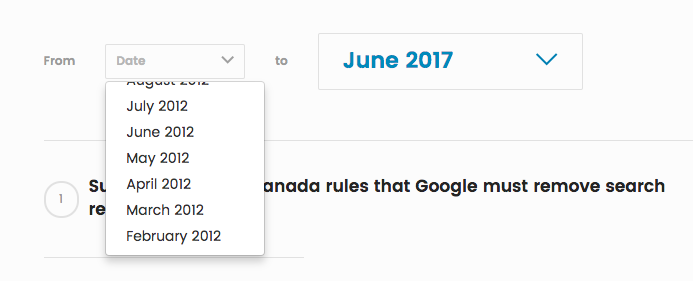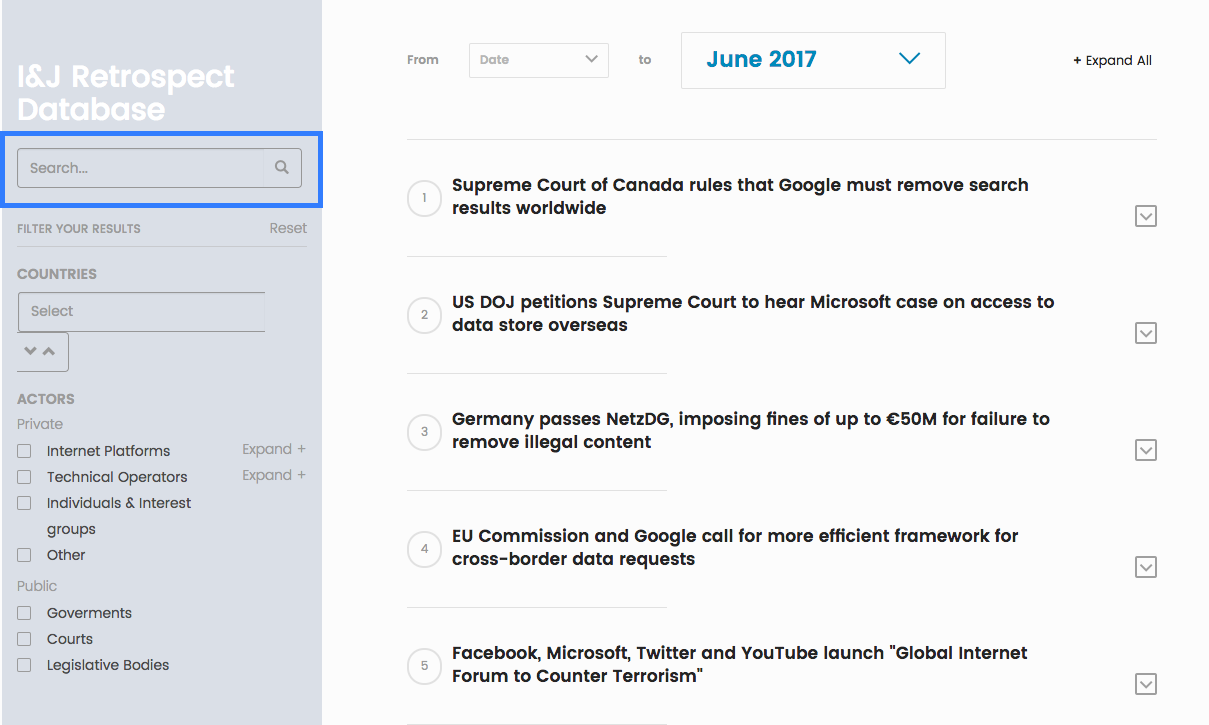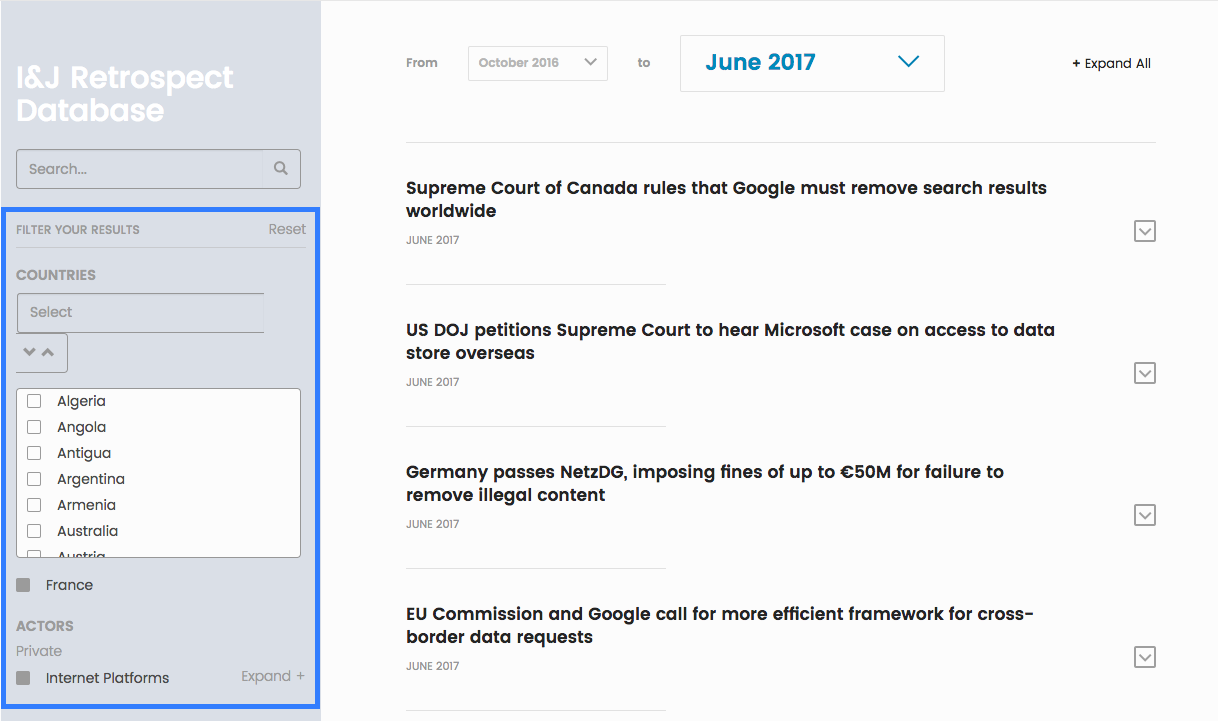Since 2012, the I&J Retrospect Database has collected the most important legal and policy developments that illustrate jurisdictional tensions on the cross-border internet. It indexes major legislative and judicial decisions, policy directions, initiatives and events that shape the state of jurisdiction on the internet. Today documenting more than 1,300 cases from 117 countries, the I&J Retrospect Database has become a respected open-access source of information for legal experts, policy makers and thought leaders. It has been referenced as an authoritative source in policy documents and media outlets such as The Economist, and enables evidence-based policy innovation in the Internet & Jurisdiction Policy Network.
Sourced by the I&J Secretariat with the help of world-class academics and equipped with handy search features, the Retrospect Database allows for a customized, targeted and thorough study of the state of jurisdictional trends on the global internet. Learn more about the five most salient features of the I&J Retrospect Database, and how to use it in the most efficient way.
Crowd-curated by the I&J Observatory
The I&J Observatory is an interdisciplinary network of world leading academics, from institutions such as Harvard University, the Humboldt Institute for Internet and Society, the Institute for Technology & Society Rio, National Law University Delhi, Oxford University, and Stanford University. Every month, a crowd-curation process incorporating members of the I&J Observatory selects and ranks by order of significance 20 cases from around the world. The 20 selected cases are then included in the Retrospect Database, building an ever-growing pool of essential evidence on the state of jurisdiction on the internet.
Succinct summary of cases and relevant information
Each case is recorded in the I&J Retrospect Database with a summary of its key facts and implications, and links are provided within the text to relevant documents or articles. Cases that made it to the I&J Observatory’s monthly Top 5 ranking are described in more detail, and benefit from a Read further section, with links to key sources and explainers. The database thereby constitutes a ‘central directory’ for internet jurisdiction cases, from which a user can search a particular topic in more depth.
Searching a specific time range

Any search on the database can be limited to a desired time period, ranging from one specific month to the whole period since 2012 during which the database has been running and growing. This allows users to gage the evolution of certain trends over some defined timeframe, or to compare and contrast the state of jurisdiction on the internet between different years or months.
Keyword search

The general search function allows users to look for a specific keyword throughout the database. Any search is thereby highly customizable according to the user’s preferences and research interests.
Filtering

The database is equipped with an elaborate tag-based filtering tool, allowing for the coupling of multiple search criteria, as well as for the search of a certain criterion without being limited to the exact spelling of the keyword search (for example, searching for “Brazil” in the keyword search will only produce cases mentioning the exact word “Brazil”, while filtering the database with the country category “Brazil” will produce all cases concerned with the Brazilian jurisdiction, including those which only mention “a Brazilian court”). Each case is categorized and searchable according to the following five dimensions:
- Countries – the jurisdiction(s) concerned by the legal or policy development
- Actors – the category of actor(s) involved in the case (Internet Platforms, Courts, Data Protection Authorities, etc.)
Modes – the mode(s) of action or mechanism(s) through which the case arose (Legislative, Judicial, Self-Regulation, etc.)
Action Focus – the technical action(s) sought through the case (Content Filtering, De-Indexing, Access to User Data, etc.)
Issue – the general topic(s) to which the case belongs (Cybersecurity, Freedom of Expression, Intermediary Liability, etc.)
Users can thereby search the database to include as many criteria as desired, and within any desired time period. The “Reset” button clears all selected filters and starts a new customized search.
These features make the I&J Retrospect Database a reliable and easy to use source of information for anyone wishing to analyse legal and policy developments related to jurisdiction on the internet.


